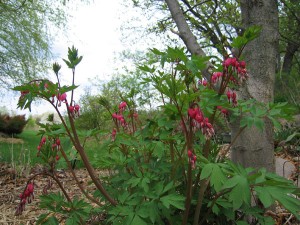Winter and the Winter Solstice Moon
Friday gratefuls: Tara. Her new puppy. Cold. Snow. Sleep. Gabriella. A Bold Return to Giving a Damn: One Farm. Amazon. New Phone. Wallet. 2024 on the way. Poetry. Road Less Taken. Lines Written at Tintern Abbey. Kubla Kahn. Notes on a Supreme Fiction. Circles. Leaves of Grass. Ozymandias. The Raven. Rhyme of the Ancient Mariner. The Wasteland. Song of Myself. The Second Coming. And so much else.
Sparks of Joy and Awe: Poetry
One brief shining: The end of another year approaches, our penchant for deciding calendar dates as the always orbiting Earth’s journey around Great Sol continues, brings us to Pope Gregory XIII who chose in October of 1582 in his well known Papal bull: Inter gravissimas to change the rules for leap years to prevent the Julian calendar’s drift away from the solar holidays, oh you didn’t know, well neither did I but Wikipedia did.

Gabriella. My adopted Axolotl. She’s swimming in the chinampas canals along with other wild Axolotls who will repopulate the ancient waterways of Xochimilco. I get excited about this project because it’s both the reintroduction of a wild species into its former habitat (see the five Timber Wolves released a week ago in western Colorado) and a project that supports indigenous farming methods healthy for the chinampas themselves. This kind of work will enable our grandchildren to have their best chance to adapt to a warming World.
A Bold Return to Giving a Damn: One Farm, Six Generations, and the Future of Food relates the story of Will Harris and his disillusionment with Big Ag 30 years ago. The successful transition of his family’s farm to regenerative farming makes compelling reading if you care about the source of your food. This farm is in southwestern Georgia, but it’s an example, not singular.
The USA Regenerative Agriculture Allliance, Inc trains farmers in regenerative practices. Yes, it’s about good food, food raised without pesticides, fertilizers and other “inputs” that defy the natural cycle and deplete the soil. But, it’s also about how to live in a warming World. Someday regenerative agriculture will use the perennial grains and other crops under development at the Land Institute.
Want to volunteer in the work of Ecosystem restoration? Look at the Ecosystems Restoration Communities website. They do restoration projects all over the world. The expertise and practical knowledge developed as these organization go about their own individual missions will become the Seedstock for a World that can no longer afford any depletion of natural capital.
What’s natural capital? An accounting method. That’s right. Accounting. The Natural Capital Project at Stanford University develops accounting methods that define the value of Ecosystems, Oceans, the Water cycle, Forests. Why is this important? Regenerative agriculture is a good example. Corporate farming, by far the dominant model in the U.S. and in most of the World, treats Soil, Crops, and Animals as so many widgets to be manipulated for increased profits. Their accounting methods do not have to take into account the value of the Soil, the Rain, the need for dna diversity in both food Crops and Animals. They don’t have to reckon with the future costs of ruined Soil, the dangers of monocultures in such critical crops as Corn, Wheat, Rice. Maybe they’re not as profitable as they think.
OK. I’ll stop. For now. But I will return to these adaptive approaches that will help Ruth and Gabe survive in a much changed world.


 s peak bearing season will commence although we have already had blueberries, strawberries, raspberries, currants, garlic, lettuce, greens, onions, parsnips, beets and sugar snap peas. Ahead of us are tomatoes, green peppers, potatoes, more greens, onions, beets, lettuce, butternut squash, leeks, wild grapes and carrots plus the odd apple. Our orchard has a ways to go before it matures. And I have a ways to go before I can care for the fruit trees in the manner to which they need to become accustomed.
s peak bearing season will commence although we have already had blueberries, strawberries, raspberries, currants, garlic, lettuce, greens, onions, parsnips, beets and sugar snap peas. Ahead of us are tomatoes, green peppers, potatoes, more greens, onions, beets, lettuce, butternut squash, leeks, wild grapes and carrots plus the odd apple. Our orchard has a ways to go before it matures. And I have a ways to go before I can care for the fruit trees in the manner to which they need to become accustomed.